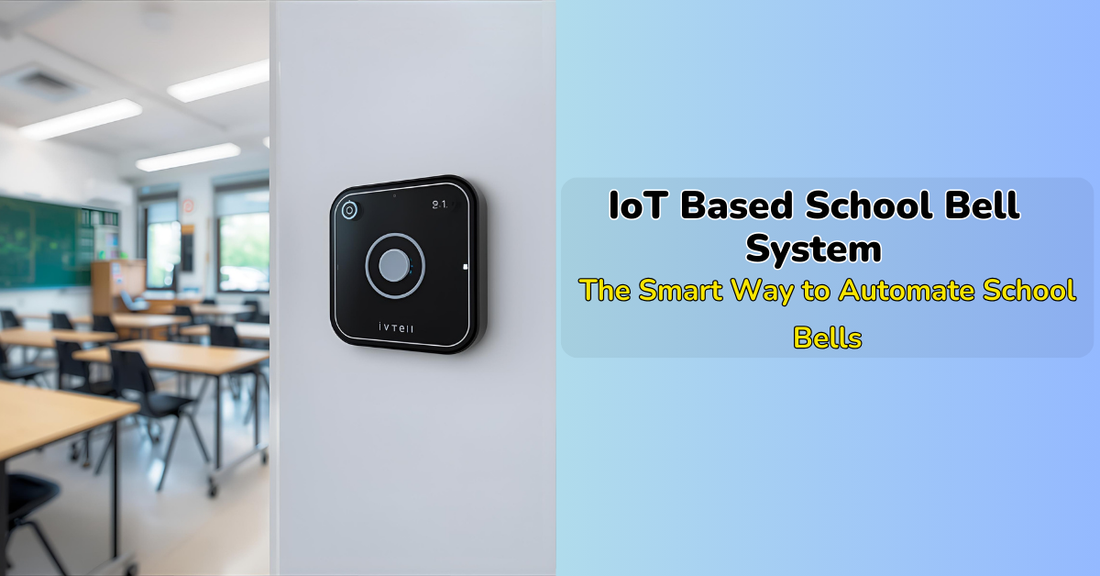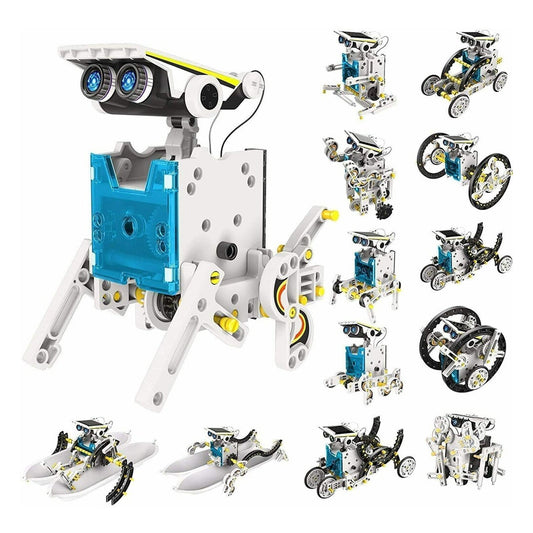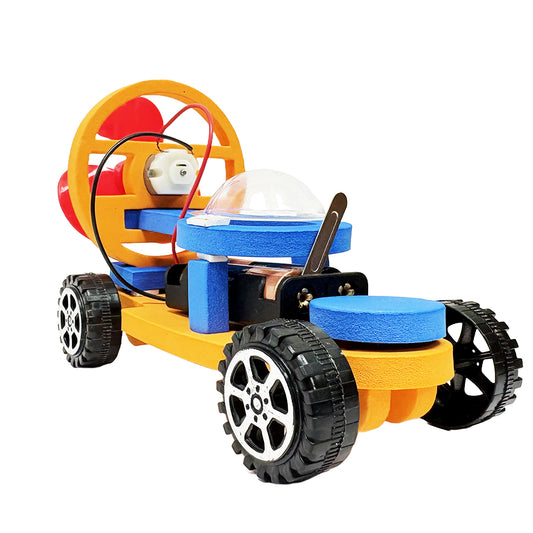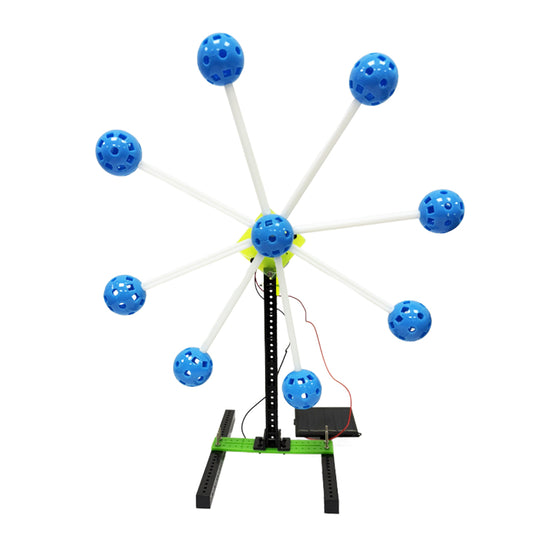
IoT Based School Bell System: The Smart Way to Automate School Bells
IEM RoboticsTable of Content
- What Is an IoT Based School Bell System?
- Evolution of school bell Systems
- How Does an IoT Based School Bell System Work?
- Key Features of an IoT Based School Bell System
- Benefits of IoT Based School Bell Systems
- Why Choose an IoT Automation School Bell System?
- Comparing Traditional vs IoT Based School Bell Systems
- Applications of IoT Based Bell Systems Beyond Schools
- Factors to Consider Before Installing a School Bell System
- Future of IoT in School Automation
- How to Choose the Best IoT Based School Bell System Provider
- Conclusion: The Smart Way Forward
In the past, the ringing of a school bell was a simple mechanical process. A person manually struck the bell, or at best, schools relied on electric timers to automate it. However, in today’s technology-driven world, schools are rapidly adopting advanced solutions to improve efficiency and discipline. One such innovation is the IoT Based School Bell System.
This modern system harnesses the power of the Internet of Things (IoT) to create an automated, accurate, and hassle-free way to manage school schedules. From ensuring timely classes to streamlining daily operations, IoT automation brings convenience to both administrators and students. In this article, we will explore how these systems work, their features, advantages, and why they are considered the best IoT based school bell system for modern educational institutions.
What Is an IoT Based School Bell System?
An IoT Based School Bell System is an advanced automation solution that uses internet connectivity and smart devices to control the ringing of bells in schools. Unlike traditional bells, these systems can be programmed, monitored, and adjusted remotely through a web or mobile application.
Essentially, the school’s timetable is integrated into the system, and the school bell system rings automatically at predefined times such as class start, recess, lunch breaks, and dispersal. Administrators can also modify or override schedules instantly without manual intervention.
Evolution of school bell Systems
To understand the significance of IoT automation, let’s look at the progression of school bell systems over the years:
1. Manual Bells – In the early days, a person rang the bell using a hammer or rope.
2. Electric Bells with Timers – Later, electric systems were introduced that rang bells based on mechanical or digital timers.
3. Programmable Electronic Bells – Schools then adopted programmable timers where schedules could be set manually.
4. IoT Automation School Bell System – The latest innovation, powered by IoT, allows real-time control, customization, and remote access.
How Does an IoT Based School Bell System Work?
The working of an IoT automation school bell system involves a combination of hardware and software.
Hardware Components
● Microcontroller (Arduino, Raspberry Pi, or ESP8266/ESP32)
● Relay modules for controlling the bell
● Speakers or buzzers for sound output
● Wi-Fi or Ethernet module for connectivity
Software Components
● Cloud server or local server for data storage
● Mobile or web application for schedule management
● User interface for administrators to set or edit bell timings
Once set up, the IoT based school bell system connects to the school’s Wi-Fi. Administrators log into the app or dashboard and configure the daily or weekly schedule. The bell rings automatically at the exact time set, eliminating delays and human error.
Key Features of an IoT Based School Bell System
The popularity of this system comes from its rich features. Here are some of the most common functionalities:
1. Remote Access and Control – Administrators can control the bell from anywhere using smartphones or laptops.
2. Customizable Timetable – Flexible scheduling for regular classes, exams, holidays, and special events.
3. Energy Efficiency – Operates only when needed, saving electricity compared to traditional systems.
4. Automatic Updates – Cloud integration ensures schedules are always updated in real-time.
5. User-Friendly Interface – Easy to operate, even for non-technical staff.
6. Integration with School Management Systems – Works in sync with other digital platforms for seamless operations.
Benefits of IoT Based School Bell Systems
The adoption of IoT automation school bell systems offers a wide range of benefits for educational institutions:
1. Time Accuracy: Since the system is synchronized with internet time, bells ring precisely without delay. This ensures punctuality in every school activity.
2. Increased Efficiency: Teachers and students no longer have to worry about manual ringing or delays, leading to smoother operations throughout the day.
3. Easy Customization: Schedules can be modified instantly to accommodate exams, half-days, or special programs.
4. Cost Savings: By eliminating manual intervention and reducing electricity usage, the school bell system proves cost-effective in the long run.
5. Enhanced Discipline: Consistent and punctual ringing helps instill discipline among students and ensures classes start and end on time.
6. Remote Monitoring: Even if the principal or admin is not on campus, they can still monitor and control the bell system remotely.
Why Choose an IoT Automation School Bell System?
Educational institutions today aim for smart infrastructure that aligns with modern standards. Choosing the best IoT based school bell system ensures:
● Smooth academic operations without manual errors.
● A future-ready environment aligned with digital transformation goals.
● A professional and organized approach that builds trust among parents and students.
Comparing Traditional vs IoT Based School Bell Systems
|
Feature |
Traditional School Bell |
IoT Based School Bell System |
|
Operation |
Manual or semi-automatic |
Fully automated and remote |
|
Schedule Management |
Manual input |
App/web-based customization |
|
Accuracy |
Moderate |
Highly accurate (internet-synced) |
|
Flexibility |
Limited |
Unlimited customization |
|
Cost Efficiency |
Moderate |
Long-term savings |
|
Ease of Use |
Requires effort |
Simple and user-friendly |
Applications of IoT Based Bell Systems Beyond Schools
While primarily designed for schools, this technology can also be applied in:
● Colleges and Universities – To manage complex class schedules.
● Factories and Industries – For shift changes and break notifications.
● Offices – To announce meetings, breaks, or closing hours.
● Hostels – For meal times, study sessions, and quiet hours.
This demonstrates how a school bell system can be adapted for various institutions that require structured schedules.
Factors to Consider Before Installing a School Bell System
If you plan to install the best IoT based school bell system, consider the following factors:
1. Compatibility with Existing Infrastructure – Ensure it integrates smoothly with your current systems.
2. Internet Connectivity – Stable Wi-Fi is essential for proper functioning.
3. Ease of Use – Opt for a system with a straightforward interface.
4. Scalability – The system should support future expansions like multiple campuses.
5. Budget and ROI – Consider both upfront cost and long-term savings.
Future of IoT in School Automation
The adoption of IoT based school bell systems is only the beginning. In the coming years, schools will see even more advanced applications of IoT that will redefine how institutions function. Some key future trends include:
1. Integration with Biometric Attendance Systems
○ IoT devices will connect directly with biometric systems such as fingerprint or facial recognition scanners.
○ Attendance will be marked automatically when students enter the classroom.
○ The school bell system can synchronize with attendance data to track punctuality and reduce manual errors.
2. AI-Powered Analytics for Schedule Optimization
○ Artificial Intelligence (AI) will analyze timetables, teacher availability, and subject distribution.
○ The system will automatically optimize class schedules for maximum efficiency.
○ Schools can avoid timetable clashes, underutilized classrooms, and wasted instructional time.
3. Voice-Assisted Control Using Smart Speakers
○ Administrators and teachers will be able to control bells or announcements through voice commands.
○ Devices like Alexa or Google Assistant could integrate with the IoT automation school bell system.
○ This will be helpful for emergencies, sudden changes, or quick announcements.
4. Data-Driven Insights for Better Operations
○ IoT systems will collect and analyze data about daily schedules, usage patterns, and efficiency.
○ Schools can identify issues such as frequently delayed classes or extended breaks.
○ Insights will help improve time management, student discipline, and administrative decisions.
How to Choose the Best IoT Based School Bell System Provider
When selecting a provider, ensure they offer:
● Reliable hardware with warranty.
● Cloud-based or hybrid software solutions.
● Technical support and training.
● Positive customer reviews and successful installations.
Investing in the right system ensures long-term benefits and hassle-free operations.
Conclusion: The Smart Way Forward
The IoT based school bell system is not just a convenience but a necessity in today’s fast-paced academic environment. It ensures time accuracy, boosts efficiency, and creates a structured environment for students and teachers. Schools that adopt such systems demonstrate their commitment to smart education and innovation.
Whether you are looking for a school bell system for daily use or aiming to upgrade to the best IoT based school bell system, embracing this technology is the right step toward modernization. With IoT automation, schools can focus more on education and less on administrative hassles, making learning more effective and efficient.









1 comment
Plz tell me price of this IOT SCHOOL BELL WITH FINGER PRINT ATTENDANCE